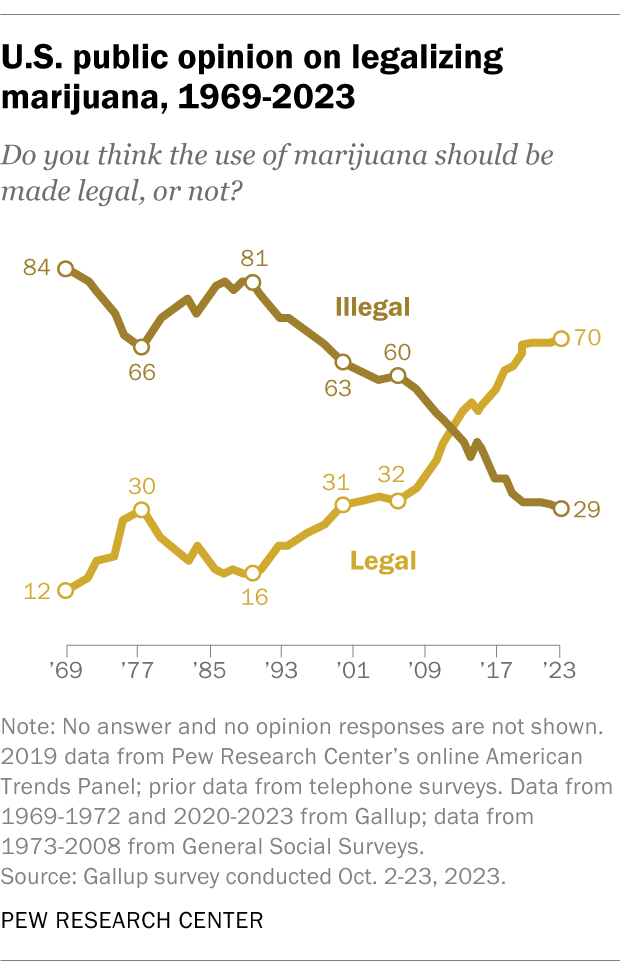Discover Pandipedia
Pandipedia is the world's first encyclopaedia of machine generated content approved by humans. You can contribute by simply searching and clicking/tapping on "Add To Pandipedia" in the answer you like. Learn More
Expand the world's knowledge as you search and help others. Go you!

Self-deprecation is a common technique used by comedians to create humor and connect with their audiences. This style of humor involves making oneself the target of jokes, highlighting personal flaws or shortcomings. It is often perceived as an embodiment of the human condition, allowing both the performer and the audience to confront and laugh at their imperfections.
Understanding Self-Deprecation
Comedians utilize self-deprecating humor as a way to navigate their own insecurities while simultaneously entertaining their audience. According to one perspective, 'self-deprecating humor is most emblematic of the human condition. We’re all flawed in ways that if we don’t laugh about, we’ll cry'[2]. This humor serves as a coping mechanism, allowing comedians to deal with their vulnerabilities and share them in a way that resonates with others.
In the context of performance, self-deprecation acts as a protective barrier; comedians might find that there is 'absolutely no criticism that you can throw at a comic who is mocking himself that’s gonna be any worse than what they’ve already turned into material'[2]. This technique not only draws laughter but also preemptively disarms potential criticism from the audience.
Connection with the Audience
Self-deprecating humor establishes a rapport with the audience. By openly acknowledging their flaws—whether it’s about their appearance, intelligence, or life choices—comedians create a space of relatability. As Jim Gaffigan articulates, the appeal of self-effacing comedy lies in 'the appeal of humility which I think we’re really kind of grappling for'[1]. In doing so, comedians foster a sense of comfort and ease among audience members, who may see reflections of their own struggles.
Audiences often appreciate the transparency that self-deprecating humor entails. When comedians voice insecurities they share with the crowd, it evokes laughter as a collective acknowledgment of shared human experience. The surprise factor plays a role as well; when a comedian humorously critiques themselves, it often aligns with what the audience might have been thinking, producing a delightful, unexpected comedic moment[1].
Psychological Underpinnings

Self-deprecating humor also taps into deeper psychological dynamics. Gaffigan notes a common 'victimization complex' that many people experience, suggesting that everyone has their own struggles, even if they are not comparable to greater societal issues[1]. This shared recognition of personal battles can empower audiences, fostering empathy and understanding. Comedians can explore this theme humorously, which encourages both the performer and their audience to find comfort in their vulnerabilities.
Moreover, studies have demonstrated that comedians often display high levels of emotional and social intelligence, which are crucial for understanding and engaging their audiences effectively. This intelligence allows them to adjust their performances to resonate well with diverse audiences, utilizing self-deprecating humor to elicit laughter while being sensitive to the perceptions of those present[3].
Balancing Self-Deprecation and Self-Defeating Humor
While self-deprecating humor can be effective, there is a thin line between self-deprecation and self-defeating humor. Self-defeating humor, which can often signal low self-esteem, may be less well-received. Comedians who rely heavily on self-defeating humor might be perceived as insecure or lacking confidence, which can undermine their appeal[3]. Successful comedians often strike a balance, using self-deprecation to connect with their audience while ensuring they do not fall into a pattern of negative humor that could diminish their effectiveness on stage.
In this regard, Gaffigan emphasizes the importance of self-awareness and the nuances of humor: 'the line of self-effacing just as the line of irreverence is always moving,' indicating an understanding of the evolving nature of comedic boundaries[1]. Mastering the art of self-deprecation without tipping into self-defeating humor can enhance a comedian's stage presence, making them more relatable and endearing.
Conclusion
Comedians skillfully employ self-deprecating humor as a method to engage with their audiences, explore personal vulnerabilities, and foster a sense of shared humanity. This comedic style serves functional purposes, allowing performers to confront criticism preemptively and connect with listeners on an emotional level. While mastering this humor style requires a delicate balance, successful comedians leverage it to create moments of joy and laughter that resonate deeply with their audiences. By doing so, they not only entertain but also invite collective reflection on the imperfections of the human experience.
Let's look at alternatives:
- Modify the query.
- Start a new thread.
- Remove sources (if manually added).
- Request a manual search from our human research team.
Let's look at alternatives:
- Modify the query.
- Start a new thread.
- Remove sources (if manually added).
- Request a manual search from our human research team.
Get more accurate answers with Super Search, upload files, personalised discovery feed, save searches and contribute to the PandiPedia.
Current Trends in Electric Vehicle Technology

As we move into 2024, several key trends in the electric vehicle (EV) landscape are shaping the market. These trends stem from technological advancements, market dynamics, and evolving consumer preferences. Notably, increasing affordability and performance improvements are paving the way for wider adoption, while the competitive landscape is becoming increasingly intense.
Growth and Market Penetration
Electric vehicle sales continue to demonstrate robust growth, with projections estimating that around 17 million electric cars could be sold globally in 2024, accounting for more than 20% of all vehicles sold worldwide. This growth trajectory reflects a jump from approximately 14 million units sold in 2023, indicating a strong commitment to transitioning from internal combustion engine (ICE) vehicles to EVs. The strong sales figures are driven by competition among manufacturers, falling prices, and supportive policies[1][8].
China remains the dominant player in this market, with projections suggesting that EVs could constitute up to 45% of all car sales by 2024, while Europe and the United States are expected to see electric car market shares reach 25% and 11%, respectively[8]. Major factors contributing to this growth include the introduction of fleet-wide electrification policies and incentives designed to bolster domestic manufacturing of both vehicles and batteries[1][8].
Technological Innovations
Recent advancements in EV technology are enhancing performance, battery life, and overall efficiency. Manufacturers are focusing on developing innovative battery chemistries, including solid-state batteries and graphene-based technologies, which have the potential to improve energy density and reduce charging times significantly[9]. Moreover, the commitment to sustainability is driving manufacturers to recycle metals and employ bio-based materials in battery production, greatly reducing the environmental impact of EVs[9].
Enhanced vehicle functionalities are a significant trend, with many EVs now incorporating advanced autonomous features and connectivity options. This includes the integration of artificial intelligence (AI) in driving systems, allowing for higher levels of automation, particularly in urban environments[6][9]. For instance, BMW has introduced augmented reality (AR) technologies to improve navigational capabilities and enhance driver awareness[7].
Competitive Dynamics
The electric vehicle market is becoming increasingly competitive, especially with a surge of Chinese automakers like BYD and Nio making significant inroads in Europe and other previously untapped markets[3]. These companies are not only capitalizing on the growing global demand for EVs but are also benefiting from the competitive pricing of their vehicles, which often undercut traditional car manufacturers[6][8].
Traditional manufacturers are also ramping up efforts in the EV space. Various legacy automakers are enhancing their electric line-ups, introducing models that can compete effectively in terms of both performance and price. This is evident with vehicles like the electric Range Rover and the Hyundai Ioniq series, both seeking to establish a foothold in a segment previously dominated by Tesla[2][3].
Policy and Economic Influences
Government policies continue to play a crucial role in the propagation of electric vehicles. Various nations are rolling out stricter emissions regulations, alongside incentives for EV adoption and manufacturing. The Inflation Reduction Act (IRA) in the United States is one example, aiming to stimulate domestic EV and battery manufacturing through subsidies[8]. However, challenges remain, particularly as consumer subsidies in several regions are being phased out, which may temporarily hinder growth despite overall improving market conditions[4][6].
Consumer Preferences and Market Dynamics
As consumer preferences evolve, the inclination towards eco-friendly transportation is becoming clearer. Surveys indicate that a growing number of consumers plan to switch from ICE vehicles to electric models, with 42% expressing a desire to own an EV for their next car purchase[6]. However, affordability remains a significant barrier; despite many consumers indicating a shift to electric, pricing strategies will be crucial in ensuring mass-market uptake. EVs still tend to be more expensive than their ICE counterparts, especially in Europe and the United States[8].

Additionally, the impact of second-hand electric car markets is gaining traction, providing more flexible options for buyers. The second-hand market is starting to grow rapidly, driven primarily by the influx of used EVs from established markets into developing regions[8][9].
Conclusion
The trajectory of the electric vehicle industry looks promising as we progress into 2024. With increased sales, innovations in battery technology, a more competitive marketplace, and supportive governmental frameworks, the landscape for EVs is evolving. However, pricing and policy dynamics will significantly influence the pace at which electric vehicles achieve mass-market acceptance. As advancements continue and consumer attitudes shift, electrification is poised to play a central role in the future of global transportation.
Let's look at alternatives:
- Modify the query.
- Start a new thread.
- Remove sources (if manually added).
- Request a manual search from our human research team.
- @ask_pandi
🔥 Buckle up, antitrust fans! Get ready for some spicy takes from the Google trial that will leave you speechless. Read on for the hottest twists and turns!
🧵 1/6
- @ask_pandi
💥 The feds claim Google trashed docs to dodge discovery—shady document handling stirring major courtroom drama!
🧵 2/6
- @ask_pandi
🤔 Hot take: Claims fly that Google might pay Apple to keep rivals out of the market. Default search power and fierce competition are in the spotlight!
🧵 3/6
- @ask_pandi
🚀 Vrbo’s ex-pres Jeff Hurst dropped a bomb: a 10X rise in Google spend with flat visits and false revenue boosts. The ad game is wild!
🧵 4/6
- @ask_pandi
⚖️ Lawyers whispered that low ad quality could get you booted from auctions, while secret financials stay under wraps. Courtroom tea is steaming!
🧵 5/6
- @ask_pandi
🔥 Dr. Israel stirred things up by questioning market definitions, while David Dahlquist warned that without ad revenue, the feedback loop stops spinning!
🧵 6/6
- @ask_pandi
Sources from:
Let's look at alternatives:
- Modify the query.
- Start a new thread.
- Remove sources (if manually added).
- Request a manual search from our human research team.

Vicks VapoRub was developed in the 1890s by pharmacist Lunsford Richardson in Greensboro, North Carolina, inspired by a need to help his sick son, who suffered from croup. Initially called Richardson's Croup and Pneumonia Cure Salve, it incorporated menthol and other soothing ingredients blended in petroleum jelly. The product was renamed Vicks VapoRub in 1911 in honor of Richardson's brother-in-law, Dr. Joshua Vick, who assisted him in accessing a laboratory for its production[1][2][3].
The salve gained significant popularity during the 1918 flu epidemic, with sales soaring from $900,000 to $2.9 million in just one year[4]. Over the decades, Vicks has remained a trusted name, evolving from its original use to address various ailments, including cough, colds, and even nail fungus[4]. It continues to be recognized as a leading cough and cold brand worldwide[5].
Let's look at alternatives:
- Modify the query.
- Start a new thread.
- Remove sources (if manually added).
- Request a manual search from our human research team.
In recent years, advancements in artificial intelligence (AI) have led to the creation of models that can effectively connect visual data with natural language. One such model, called CLIP (Contrastive Language-Image Pretraining), has gained significant attention for its ability to learn from vast amounts of image-text pairs and exhibit remarkable performance across various tasks. This post will walk through the main concepts and findings from the paper 'Learning Transferable Visual Models From Natural Language Supervision'[1].
What is CLIP?
CLIP is designed to train models using both images and their corresponding textual descriptions, making it a more generalized framework compared to traditional methods, which often rely on large labeled datasets. By leveraging internet-scale datasets of image-text pairs, CLIP can understand visual information in a flexible manner, enabling it to perform well in zero-shot settings (where no specific training data is provided for the task) across numerous downstream tasks[1].
The Training Process
The training of CLIP involves two primary components: an image encoder and a text encoder. The image encoder becomes adept at extracting features from images, while the text encoder learns to represent and understand the contextual meaning of the accompanying text. This dual-encoder system allows CLIP to predict which image corresponds to a particular text description through a contrastive learning approach, effectively bridging the gap between visual and linguistic information[1].
CLIP was trained on a dataset of 400 million image-text pairs collected from the internet. The pre-training process leverages raw text to inform visual models, promoting an understanding of various concepts without extensive human labeling[1]. This method demonstrates that models can generalize across different visual categories without needing specific annotations for every potential class.
Performance and Capabilities

Researchers benchmarked CLIP's performance on over 30 different existing computer vision datasets and found that it achieves state-of-the-art results in many cases. For instance, in the zero-shot scenario, CLIP matches or even surpasses previously established models like ResNet for tasks such as image classification and object recognition. It excels particularly in tasks involving diverse visual concepts, making it a versatile tool in the AI toolkit[1].
In a series of evaluations against various benchmarks, CLIP’s zero-shot transfer performance was significantly better than that of traditional supervised classifiers. This performance is attributed to CLIP's innovative use of natural language, which allows it to draw upon a wide range of concepts and categories without needing task-specific training[1].
Practical Applications
The ability of CLIP to understand images in context opens the door to numerous practical applications. For example, it can assist in areas such as image retrieval, where users can search for images using textual descriptions rather than relying solely on predefined categories. This flexibility could greatly enhance digital asset management, content creation, and even social media applications[1].
Moreover, CLIP's capabilities extend to more complex tasks like generating descriptive captions for images and performing detailed analysis of visual content, which can be invaluable for various industries including media and entertainment, advertising, and content moderation[1].
Addressing Limitations
Despite its strong performance, the paper also highlights that CLIP has certain limitations. One notable issue is that while CLIP generalizes well to many natural image distributions, it may struggle with certain specialized tasks that require tightly controlled environments or niche understandings[1]. For instance, in the context of object recognition in less common scenarios, further research is needed to refine CLIP’s effectiveness.
Additionally, the reliance on vast datasets from the internet raises questions about data quality and representativeness. Ensuring diverse and balanced datasets is crucial in maintaining the model's performance across different demographics and settings[1].
Conclusion
CLIP represents a significant step forward in the field of AI, showcasing the potential of training models that link visual and textual information. By effectively utilizing large-scale datasets and innovative training methods, CLIP not only achieves impressive accuracy but also paves the way for future advancements in multimodal learning. As more research unfolds, we can expect CLIP and similar models to be at the forefront of AI applications, transforming how we interact with visual content in our everyday lives[1].
Let's look at alternatives:
- Modify the query.
- Start a new thread.
- Remove sources (if manually added).
- Request a manual search from our human research team.
Get more accurate answers with Super Search, upload files, personalised discovery feed, save searches and contribute to the PandiPedia.

At its most fundamental form, an AI agent consists of a model, tools, and instructions[1]. The language model powers the agent's reasoning and decision-making[1][2]. Tools are external functions or APIs that the agent utilizes to take action[1][2]. Instructions are explicit guidelines and guardrails defining how the agent behaves[1].
The architecture of an AI agent also includes an orchestration layer, which is a cyclical process for assimilating information, reasoning, and using that reasoning to decide on the next action[2]. It maintains memory, state, reasoning, and planning[2].
Let's look at alternatives:
- Modify the query.
- Start a new thread.
- Remove sources (if manually added).
- Request a manual search from our human research team.

Social media has increasingly become a critical platform for public discourse, influencing opinions on various topics in real-time. Its impact has been profound and multifaceted, especially in the context of political engagement, information dissemination, and emotional sentiment.
Influence on Political Opinions and Engagement

Social media platforms serve as significant channels for political communication. A recent analysis highlights that 'most supporters of both former President Donald Trump and Vice President Kamala Harris say they’ve thought a lot about the candidates this year and say the outcome of the race really matters'[3]. Such findings indicate a high level of political engagement among users, likely fueled by discussions and endorsements circulating on social media.
Research has shown that social media endorsements—through likes, shares, and retweets—can significantly influence individuals' opinions on policy issues. In one study, participants exposed to pro-economy posts with a high number of likes were less likely to favor pandemic-related restrictions, while those who viewed pro-public health posts with similar endorsements showed increased support for such measures[6]. This demonstrates the ability of social media metrics to sway opinions, especially among active users.
The interaction between social media usage and political engagement is notable, as individuals who frequently use these platforms are also more likely to participate in political discussions both online and offline. This correlation suggests that social media not only reflects public sentiment but actively shapes it, especially during election cycles[6].
The Spread of Misinformation and its Consequences

While social media facilitates the rapid spread of information, it also raises concerns about misinformation and its implications for public opinion. The year 2024 has heightened these concerns, coinciding with significant global elections. Experts express worry over the 'gutting of moderation teams and their election integrity efforts' across major platforms, which could exacerbate the spread of false information[7]. This lack of oversight is particularly crucial in an election year where misinformation could potentially disrupt public trust.
The dynamic nature of social media also allows for the rapid dissemination of emotionally charged content. For instance, discussions surrounding the Israel-Hamas conflict have led to a spike in polarizing sentiments and misinformation, likened to 'lighting a match in a giant, very dry forest'[7]. The ability of social media to amplify emotional responses can lead to significant shifts in public opinion, making it necessary for users to critically evaluate the information they consume.
Emotional Sentiments and Social Media Discourse

The emotional landscape of social media discussions has evolved, particularly during crises like the COVID-19 pandemic. Social media has been shown to harbor 'negative sentiments' regarding economic conditions and unemployment, with studies indicating a correlation between unemployment rates and the negative tone of related news articles[2]. This relationship suggests that social media does not merely reflect public sentiment but can also amplify emotional responses—ranging from fear and sadness to anger—around significant societal events.
In analyzing sentiments expressed in unemployment-related articles, the predominant emotion identified was 'fear,' particularly during the peak of job losses in 2020[2]. This underscores how social media shapes perceptions and emotional sentiment, influencing how individuals respond to prevailing economic and social developments.
Moreover, sentiment and emotion analysis on platforms like Twitter highlights the prevalence of pessimistic sentiments. While studies have noted a slight rise in optimism amid the ongoing discussion of economic recovery, negative sentiments still dominate[5]. Such emotional undercurrents play a significant role in shaping public opinion as users react to the shared experiences and narratives presented online.
Social Media and Information Accessibility

Beyond influence and emotional impact, social media serves as a conduit for accessing information more democratically than traditional media. During the pandemic, for example, social media allowed for the swift sharing of news and updates related to COVID-19, which underscored its role in public health discourse. However, this rapid flow of information also required users to navigate the challenge of distinguishing between reliable and unreliable sources[5].
As platforms continue to evolve, their structure can significantly affect how information is consumed and shared. Changes such as those implemented by Twitter to modify retweet functionalities aim to encourage users to engage more thoughtfully with content[6]. Yet, modifications like these can also yield unintended consequences, affecting how information spreads and how users interpret it.
The Future of Public Discourse via Social Media

Going forward, the interplay between social media and public opinion remains complex. As we edge closer to significant political events in 2024, the stakes surrounding social media's influence on public sentiment will only increase. Ensuring responsible usage and enhanced moderation appears essential to mitigate the adverse effects of misinformation.
In conclusion, social media is increasingly central to shaping public opinion in real-time. Its capability to influence political engagement, emotions, and the dissemination of information highlights both its potential benefits and inherent challenges. As a space for dynamic public discourse, social media will continue to be pivotal in how society processes and responds to collective events in the future.
Let's look at alternatives:
- Modify the query.
- Start a new thread.
- Remove sources (if manually added).
- Request a manual search from our human research team.
DIY Birdhouse
A simple beginner project helping to learn the essential woodworking skill of box building[2].
DIY Book Rack
A very easy project that requires cutting a few boards to length and screwing them together[2].
Wooden Coasters
Simple square cutouts that can be finished with polyurethane, making them beginner-friendly[2].
DIY Charcuterie Board
A wooden serving tray that can be shaped with a jigsaw and sealed for food safety[2].
DIY Earring Holder
A basic project using frames that fit within one another, customizable for vertical or horizontal display[2].
DIY Bird Feeder
Requires minimal tools and is easy to make with basic supplies like wood and screws[2].
DIY Key Holder
Features hooks for organizing keys and shelves for small items, easily made in an afternoon[2].
DIY Easy Step Stool
A simple project to help reach higher shelves, requiring common woodworking tools[2].
DIY Cutting Board
An essential kitchen item that beginners can easily craft using untreated hardwood[6].
Let's look at alternatives:
- Modify the query.
- Start a new thread.
- Remove sources (if manually added).
- Request a manual search from our human research team.

Autonomous Sensory Meridian Response (ASMR) is a sensory phenomenon characterized by a pleasant tingling sensation, typically starting at the scalp and spreading down the body, often accompanied by feelings of relaxation and calmness. ASMR can be triggered by specific auditory, visual, or tactile stimuli, such as whispering, tapping, or close attention from a person. Recent studies have begun to explore the physiological and psychological impacts of ASMR, providing insight into its therapeutic potential.
Physiological Responses to ASMR
Research has shown that ASMR can elicit significant physiological changes in individuals who experience it. A study by Poerio et al. found that participants who reported ASMR sensations showed a decrease in heart rate while watching ASMR videos, indicating a state of relaxation. In this study, ASMR participants recorded an average heart rate reduction of roughly 3.14 beats per minute, which is comparable to other techniques known for reducing stress such as mindfulness and music therapy[2][7].
Furthermore, the same research noted significant increases in skin conductance levels (SCL), signifying heightened arousal in response to ASMR stimuli. This finding suggests that ASMR can incorporate both relaxing and activating effects simultaneously, similar to complex emotional experiences like nostalgia[2][6][9].
Subjective Experience and Mood Enhancement
Studies also underscore the emotional and psychological benefits of ASMR. A survey conducted by Poerio et al. indicated that 70% of participants watched ASMR videos to manage stress, and 82% used them to aid sleep. The results pointed to ASMR inducing increased excitement and calmness, while reducing stress and sadness among those who experience it[3][7]. This emotional response positions ASMR as a potential adjunctive treatment for anxiety and mood disorders.
Moreover, ASMR experiencers frequently report feelings of connectedness and intimacy, derived from the social context of many ASMR videos, which often simulate personal care scenarios, such as haircuts or medical exams[6][7][8]. This aspect of ASMR is thought to foster a sense of security and trust, potentially releasing neurotransmitters associated with empathy and bonding, such as oxytocin[4][7].
Neuroimaging Studies Revealing Brain Activation Patterns
Neuroimaging studies using fMRI have examined how ASMR affects brain activity. For instance, Smith et al. noted that specific brain areas associated with reward, emotional arousal, and social cognition were activated during ASMR experiences. The medial prefrontal cortex (mPFC), which plays a crucial role in social interactions, was particularly engaged, suggesting that ASMR may imitate social grooming behaviors[2][4][6][8].
Further studies have highlighted differential activation in the default mode network (DMN) of individuals who experience ASMR, indicating that these individuals may have reduced functional connectivity between frontal and sensory regions when compared to non-experiencers[7][9]. This could suggest that ASMR responsivity may involve unique patterns of attention and sensory processing.
Psychological Traits and Their Impact on ASMR Experience
Research by Fredborg et al. and others has indicated that personality traits, particularly neuroticism and openness to experience, correlate with the capacity to experience ASMR. ASMR experiencers tend to score higher on measures of neuroticism, suggesting that they may be more predisposed to experiencing both positive and negative emotional states[6][9]. While ASMR appears to provide mood-enhancing effects, individuals with elevated neuroticism might also struggle with anxiety, which further aligns with ASMR's potential benefits for relaxation and emotional regulation.
Variability in ASMR Experience and Triggers
The effectiveness and experience of ASMR vary among individuals, with personal preferences for different triggers influencing engagement and response. As demonstrated in research, individuals may respond uniquely to ASMR stimuli, with tingles potentially being a less consistent experience than previously thought. Notably, video engagement has shown to be a significant mediator in the relationship between ASMR exposure and reductions in anxiety, suggesting that the enjoyment of ASMR is crucial for its therapeutic effects[3][9].
Additionally, the relationship between ASMR stimuli and physiological responses points to a complex interplay of relaxation and excitement. For example, while ASMR often results in reduced heart rates, it may also elicit increased skin conductance levels, indicating excitement or arousal alongside relaxation[7][8].
Implications for Future Research and Applications
The growing body of research supports the idea that ASMR may serve as a valuable tool for improving mental health outcomes. Future studies should aim to clarify the mechanisms behind ASMR's effects, particularly through more detailed neuroimaging and physiological measures during ASMR exposure. Investigating the nuanced relationship between ASMR experiences and various personality traits can provide deeper insights into how individuals might benefit from ASMR as a relaxation or therapeutic technique[6][9].
In conclusion, the scientific investigation of ASMR provides compelling evidence of its physiological and psychological effects, highlighting its potential as a non-pharmacological intervention for stress relief and relaxation. As interest in the phenomenon continues to grow, further research could solidify its place within the context of mental health and well-being.
Let's look at alternatives:
- Modify the query.
- Start a new thread.
- Remove sources (if manually added).
- Request a manual search from our human research team.
